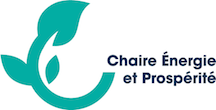Abstract
We examine the impact of public policies and technical solutions that aim to decarbonate electricity production by replacing fossil fuel energy by intermittent renewable sources, namely wind and solar power. We consider a model of energy investment and production with two sources of energy: one is clean but intermittent (e.g. wind), whereas the other one is reliable but polluting (e.g. coal). Intermittency increases the cost of renewables through two channels: less frequent production and the need to back-up production from renewable with thermal power. It also increases the volatility of wholesale electricity prices. With competitive markets, the first-best energy mix is achieved with a pigouvian carbon tax but not with the most popular supports to renewables: feed-in tariffs and renewable portfolio standards. Both polices enhance investment into intermittent sources of energy. However, they boost electricity production beyond the efficient level. They must be complemented with a tax on electricity consumption. We also determine the social value of two technologies to accommodate intermittency: energy storage that allows to smooth solar and wind variations among states of natures and smart meters aimed at making consumers more price responsive.
Découvrez en ligne la dernière newsletter et inscrivez vous pour recevoir la prochaine


